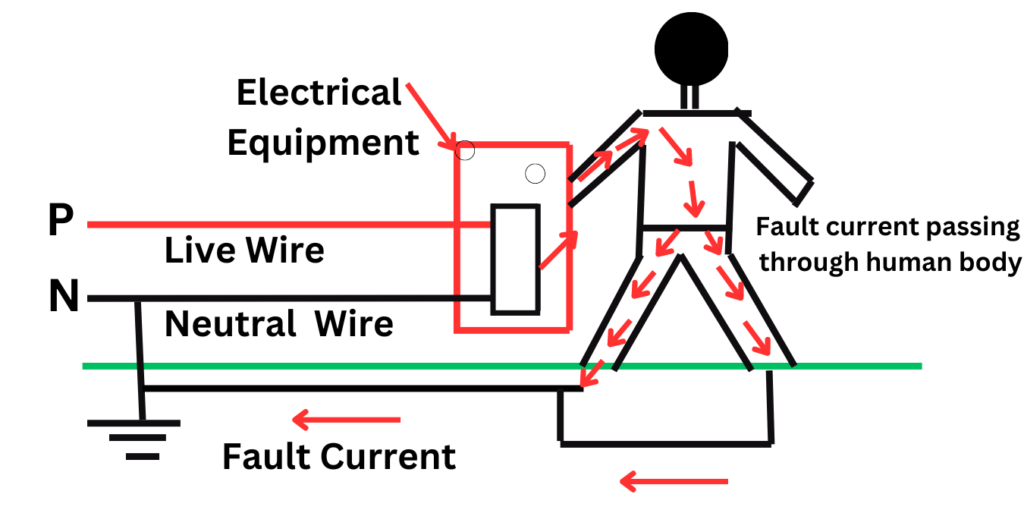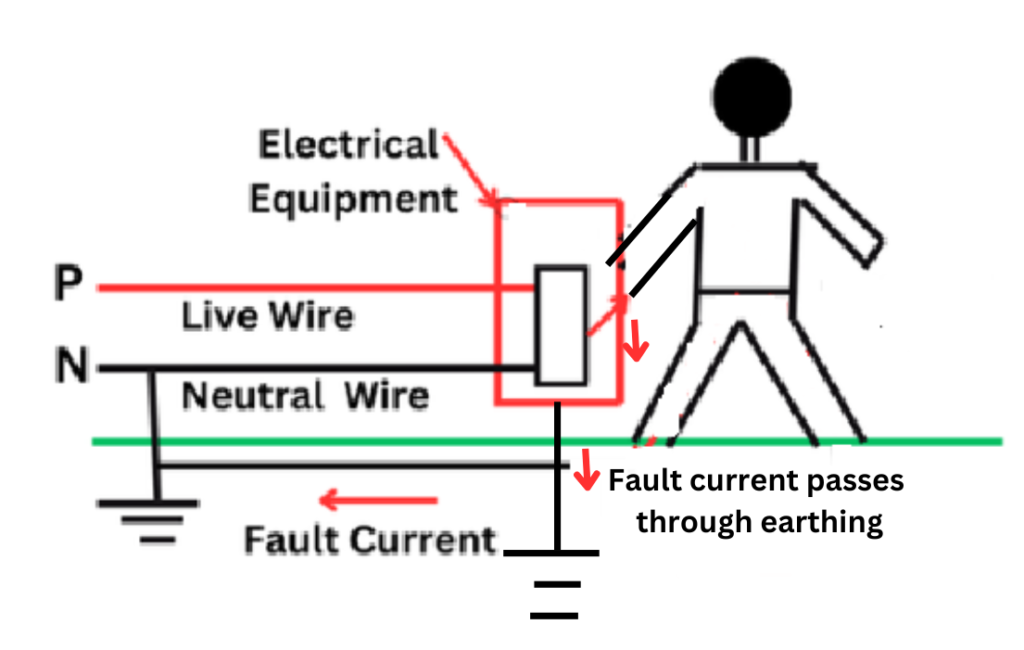Definition: Electrical earthing is the process of directly discharging electrical energy to the earth using low-resistance wire. This is done by connecting the equipment’s non-current-carrying part or the supply system’s neutral to the ground.
Do you know that galvanized iron is often used for earthing in electrical systems? It’s pretty cool! The earthing process creates a safe pathway for any leakage current to flow. This is important because in the event of a short circuit, the current passes to the earth, which has zero potential and helps protect the system and equipment from any damage. It’s like having a superhero watching over your electrical system, keeping everything safe and sound!
Types of Electrical Earthing
Electrical equipment typically includes two non-current-carrying parts that serve as the system’s neutral or frame. The earthing of these two non-current-carrying parts allows for classifying earthing into two types.
- Neutral Earthing
- Equipment Earthing.
Neutral Earthing
Neutral earthing connects the neutral of an electrical power system to the earth through a GI wire for safety purposes. This type of earthing is also known as system earthing and is mostly provided to systems with star-winding configurations, such as generators, transformers, and motors.
The purpose of neutral earthing is to prevent the buildup of high voltages that could lead to insulation failure, electrical shocks, and even equipment damage. By connecting the neutral to the earth, any leakage current in the system is safely diverted to the ground, protecting both people and equipment.
There are four types of neutral earthing: solid earthing, low-resistance earthing, high-resistance earthing, and reactance earthing. In solid earthing, the system’s neutral is directly connected to the earth, which is suitable for low-voltage applications.
The neutral earthing system ensures that the voltage between the neutral and the earth does not exceed a safe level, typically 1 volt. This is achieved using a neutral earthing resistor, which limits the current flowing to the ground. Overall, neutral earthing is an essential safety measure particularly important in power systems with high voltages. It helps to protect people and equipment, prevent electrical shocks and fires, and ensure the reliable operation of the system.
Equipment Earthing
To ensure the safe operation of electrical equipment, a type of earthing is implemented that involves connecting the non-current carrying parts of the equipment, such as their metallic frames, to the earth using a conducting wire. This is done to provide a safe path for any short-circuit current to pass through the earth, thereby preventing damage to the system. In case of any faults in the equipment, this earthing system ensures that the short-circuit current does not pose a risk to the user or the equipment itself. It is an important safety measure commonly implemented in various electrical systems.
Importance of Electrical Earthing
Earthing is essential for the following reasons.
- The earth connection safeguards the personnel from any potential harm caused by a short circuit current.
- The earthing provides a low resistance path for short circuit current to flow even after the insulation failure.
- The earthing system protects equipment and personnel from high voltage and lightning.
To earth electrical installations, the parts of the installation must be electrically connected to a system of electrical conductors or electrodes installed near the soil or below the ground level. An earthing mat or electrode is placed under the ground level, and it has a flat iron riser that connects all non-current-carrying metallic parts of the equipment.

When the fault occurs, the fault current from the equipment flows through the earthing system to the earth, thereby protecting the equipment from the fault current. At the time of the fault, the earth mat conductors rise to a voltage equal to the resistance of the earth mat multiplied by a ground fault. Therefore, keeping the earth’s resistance as minimal as possible is a must.
